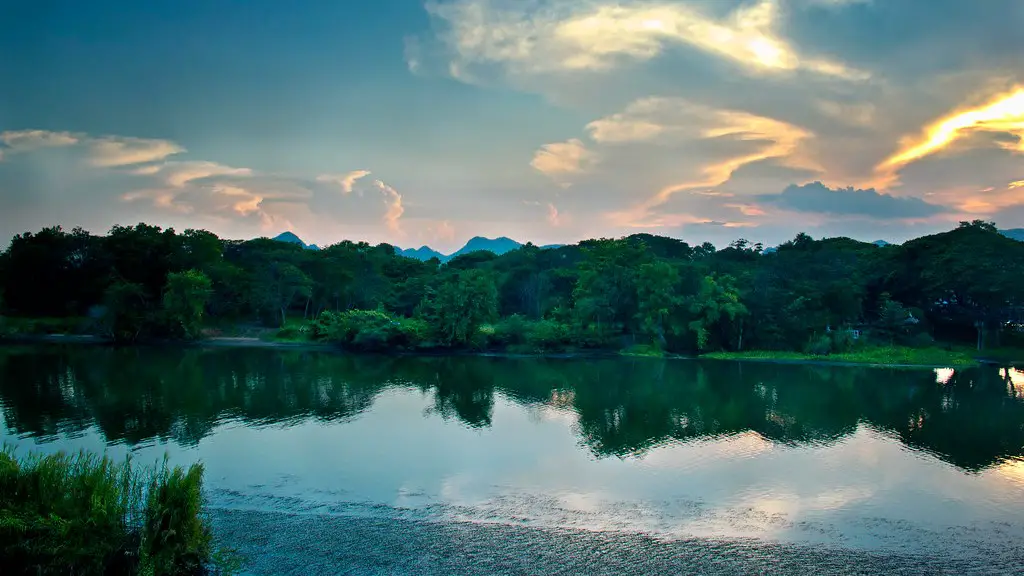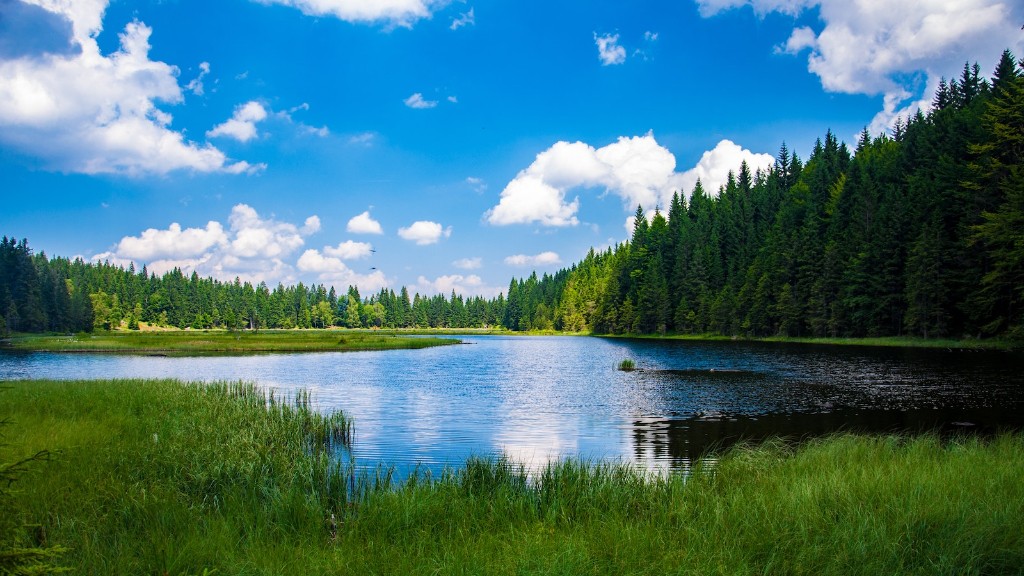The Mississippi River is the fourth longest river in the world, running from its source at Lake Itasca in Minnesota all the way to the Gulf of Mexico. However, one thing is currently making the river stand out – the unusually low level of its waters. Recent drought conditions have caused the level of the Mississippi River to decrease drastically.
The drought is causing a great deal of disruption in the states which border the river. Illinois, Kentucky, Arkansas and Mississippi have been hit hardest by the dip in water levels. The decrease in the water levels has caused the depth of the river’s channel to become too shallow for many large barges of coal, grain and other commodities to navigate the waters, meaning that companies are having to resort to more costly measures such as rail transport.
The U.S Army Corps of Engineers has been monitoring the river’s levels and have expressed concern as to how serious things have gotten. In response to the low levels, the Corps have released water from a nearby reservoir in order to attempt to bring the level of the Mississippi River back up. Although this has been successful to a small extent, the drought conditions are still not allowing the river to return to its normal level.
Experts are beginning to closely examine the impact the drought could have on the river’s ecosystem. One of the main concerns is that the decrease in water levels could cause the river’s current to slow, leading to the water becoming stagnant and allowing for the growth of algae and other forms of marine life.The unhealthy and toxic blooms of algae can cause fish and other wildlife to suffer, while they also disrupt and interfere with leisure activities, such as fishing.
Climate change is increasingly being discussed as one of the main causes of the decrease in the Mississippi River’s levels. As weather patterns become more unpredictable and temperatures rise, the amount of water in the river is directly affected.
The Effects on Infrastructure, Businesses and Local Communities
The Mississippi River serves as an artery of goods, services and resources to not just Americans downstream, but to many countries who rely on US goods shipped along the river. The river is a key part of US infrastructure and the economy, so its current state is threatening the way of life for local communities and businesses up and down its length.
Local businesses, who depend on the river as a form of transportation, have been significantly impacted by the low levels. Without the river, companies are having to use expensive rail transport to get their goods from A to B, which has increased the cost of their product for buyers. The low levels are also likely to hinder any form of boat tours or recreation activities along the river, hurting the tourism industry in towns and cities near the Mississippi River.
Infrastructure is also being impacted by the drought. The Corps have expressed concern regarding the ports, bridges and levees lining the Mississippi River, stating that the large decrease in water levels could lead to greater potential of damage. The river’s banks are also vulnerable to erosion due to the decrease in water, increasing the likelihood of flooding due to compromised levees.
Potential Solutions to Mitigate Future Losses
Experts have been scrambling to chart a course of action to bring back the water levels of the Mississippi River. The U.S Army Corps of Engineers have implemented a wide range of measures to try and increase the water level. These include releasing water from a local reservoir, dredging the river and even introducing river-cleaning mud to encourage the flow of water.
On a much larger scale, it is apparent that something must be done to prevent the extreme effects of climate change and the deteriorating river conditions. Stories such as the current river situation must be shared with the population in order to effectively create awareness, and motivate individuals to work together to reduce emissions and preserve the environment.
Ultimately, it is down to the individuals to act and pressure the government to make a change, whether that be in terms of regulations, preventing the cutting of forest beds or the introduction of renewable energy sources. Once the government is fully on board with adapting their laws to support the fight against climate change, from then onwards it is paramount that people make conscious decisions to reduce their carbon footprint and further encourage a sustainable lifestyle.
The Concern for Long-term Environmental Damage
The river’s ecology is another example of how the decrease in water levels is having a damaging effect. It has been suggested that the low water flow of the river is having an effect on the animals and plants which are native to the area. Decreased water depth can pose a serious threat to certain plants and animals which live in the Mississippi River, due to the decreased water flow no longer providing enough oxygen and nutrients to the river’s ecosystem.
The water loss has also had an effect on the spawn of certain fish species, meaning the population numbers are likely to decrease. The lack of fresh, clean water may also limit the production of certain algae and weed, causing further problems for the fish. The risk of water contamination from agricultural or industrial runoff is also high due to the low water levels, putting animals and plants at risk of toxicity.
The Importance of the River for Surrounding Communities
The Mississippi River is an invaluable resource for the local communities in its vicinity. The economy, industry and even livelihoods are reliant on the river, making it an important asset which must be protected. Rivers yield incredible benefits from providing clean drinking water to aiding local industries, so it is both financially and socially beneficial for communities to protect the Mississippi River from further damage and maintain it as a key part of the ecosystem.
Local communities must take extreme care to ensure that they are following the appropriate regulations to protect the river, whether that be by reducing their plastic usage or avoiding the use of toxic chemicals and wastewater. Without the local population working together to ensure regulations are kept, it is unlikely that the water levels will increase significantly.
The Need to Take Action
The situation with the Mississippi River clearly demonstrates the effects of climate change and the impact it is having on the environment. More extreme weather patterns and unpredictable temperature changes are having a huge effect on both land and sea life, with the Mississippi River acting as an example of how fragile nature is and how it must be taken care of.
The challenge for all of us is to act and take the necessary steps to reduce pollution and enable nature to recover. It is important for governments and individuals to work together to create long-term solutions, and preserve the environment for future generations to come.
The Implications of the Low Water Levels
The low levels of the Mississippi River are bringing out various implications on the environment, economy, industry and community. The disruption of shipping, stagnation of waters, and potential contamination of waters are just some of the damaging effects that could be felt. All of this shows that something must be done in order to address the decline of the river’s water level and work to restore the environment along the banks of the Mississippi.
Furthermore, further disruption of trade, manufacturing, and environment could also lead to a further decline in the local economy and development. This means that it is more important than ever to action a solution in order to ensure ongoing progress and stability of the Mississippi River and its surrounding region.
The fact that the Mississippi River is the fourth longest river in the world serves as a testament to its importance. This means that any disruption or degradation of the waters of the river must be taken seriously, so that the long-term damage of the drought will not persist.
The Benefits of a Healthy Mississippi River
In order to understand why the Mississippi River is so important, it is essential to understand what a healthy Mississippi River can offer. A healthy river offers immense ecological, economical, and cultural benefits to the towns, cities, and states that rely on it.
The Mississippi River is integral to the surrounding wildlife and plants, with the water providing essential oxygen and other nutrients to the ecosystem. This ensures its protection and the ability to provide shelter and a food source to the animals and plants living in the area.
The river also plays an integral role in the economy of the region, allowing for large vessels and shipping to efficiently transport goods from port to port. This ensures the port cities of the Mississippi remain busy and active, meaning that economic opportunities present themselves for the local population.
Finally, the Mississippi River is also an invaluable cultural asset, with the river being considered as the heart of America. The stories and tales that are told of the river demonstrate the importance it has in the hearts of the local population. Its importance to the surrounding culture should not be underestimated, with the river being a source of wonder, mystery, adventure, and creativity to those living along its banks.
Conclusion: Protecting the Environment and the Mississippi River
In conclusion, it is evident that the low levels of the Mississippi River serve to provide a great example of the negative effects of climate change on the environment. The implications for the local communities, ecosystems, and wildlife must not be underestimated and a clear path of action needs to be taken to protect the river from any further damage.
The need to take action and reduce pollution become imperative, in order to preserve the environment for future generations. The stories of the Mississippi River must be told and widely shared, in order to motivate individuals to adapt and help create and maintain a healthy and successful Mississippi River. This will ultimately help the towns, cities, and states that rely on the Mississippi River, so it is in all of our best interests to act and do all we can to protect this vital resource.





